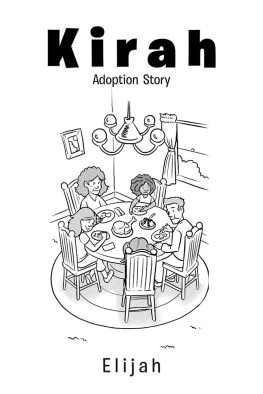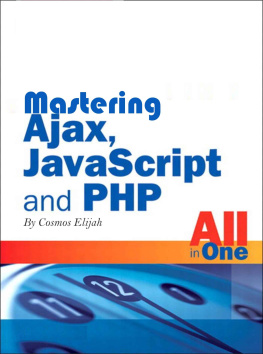Logozar - Chessable: Logozar, Elijah - 1.e4 - A Comprehensive White
Here you can read online Logozar - Chessable: Logozar, Elijah - 1.e4 - A Comprehensive White full text of the book (entire story) in english for free. Download pdf and epub, get meaning, cover and reviews about this ebook. genre: Home and family. Description of the work, (preface) as well as reviews are available. Best literature library LitArk.com created for fans of good reading and offers a wide selection of genres:
Romance novel
Science fiction
Adventure
Detective
Science
History
Home and family
Prose
Art
Politics
Computer
Non-fiction
Religion
Business
Children
Humor
Choose a favorite category and find really read worthwhile books. Enjoy immersion in the world of imagination, feel the emotions of the characters or learn something new for yourself, make an fascinating discovery.

- Book:Chessable: Logozar, Elijah - 1.e4 - A Comprehensive White
- Author:
- Genre:
- Rating:5 / 5
- Favourites:Add to favourites
- Your mark:
- 100
- 1
- 2
- 3
- 4
- 5
Chessable: Logozar, Elijah - 1.e4 - A Comprehensive White: summary, description and annotation
We offer to read an annotation, description, summary or preface (depends on what the author of the book "Chessable: Logozar, Elijah - 1.e4 - A Comprehensive White" wrote himself). If you haven't found the necessary information about the book — write in the comments, we will try to find it.
Logozar: author's other books
Who wrote Chessable: Logozar, Elijah - 1.e4 - A Comprehensive White? Find out the surname, the name of the author of the book and a list of all author's works by series.
Chessable: Logozar, Elijah - 1.e4 - A Comprehensive White — read online for free the complete book (whole text) full work
Below is the text of the book, divided by pages. System saving the place of the last page read, allows you to conveniently read the book "Chessable: Logozar, Elijah - 1.e4 - A Comprehensive White" online for free, without having to search again every time where you left off. Put a bookmark, and you can go to the page where you finished reading at any time.
Font size:
Interval:
Bookmark:
[Event ?] [Site ?] [Date ????.??.??] [Round ?] [White Introduction to 1.e4] [Black Why 1.e4?] [Result *] 1. e4 { Why 1.e4? At master level, 1.e4 is the most popular first move. White controls the center, opens the diagonal for his light-squared bishop (bringing himself one step closer to castling) , and prepares to start developing. 1.e4 has been the favorite of many world champions and amateurs alike. One key aspect of 1.e4 compared to other popular first moves such as 1.d4 is that the resulting positions tend to be a bit more open, and there are fewer transpositions to other openings. } { Articles Chess.com Other free internet articles Databases Chess.com Chessgames.com HIARCS Main engine Stockfish Books Grandmaster Repertoire: 1.e4 vs. } { Articles Chess.com Other free internet articles Databases Chess.com Chessgames.com HIARCS Main engine Stockfish Books Grandmaster Repertoire: 1.e4 vs.
The French, Caro-Kann and Philidor (Negi) Playing 1.e4: Caro-Kann, 1e5 & Minor Lines (Shaw) The English Attack Against the Taimanov Sicilian: A Guide for White (Andriasyan) The Steinitz Defense Deferred (Kuljasevic) Revolution in the 70s (Kasparov) Kasparov vs. Karpov 1975-1985 (Kasparov) Kasparov vs. Karpov 1986-1987 (Kasparov) Kasparov vs. Karpov 1988-2009 (Kasparov) My 60 memorable games (Fischer) Chess Praxis (Nimzowitch) Chessable repertoires IM John Bartholomews Scandinavian The Fighting Sicilian: A complete repertoire vs 1.e4 (MarkoMakaj) The Practical Caro-Kann (Tom Bartell) The Hyper Accelerated Dragon: A Full Repertoire for Black (IM Raja Panjwani) Accelerate the Dragon (IM piongu) Demolish White with the Sicilian: A complete repertoire against 1.e4: part 1 (MozartOfChess) Play the Classical Sicilian (SonOfSorrow) The Sicilian Dragon - Tournament edition (GermanMC) 1.e4 e5!: A comprehensive repertoire against 1.e4 (GermanMC) Sicilian Defence, Pin Variation: Based on Free GM Lecture (gamesrelated) Crush the Dragon! (logozar) Videos Rocking the Ruy Lopez (Leonid Kritz) Caro-Kann: Secrets Revealed (Alex Ostrovskiy) Free youtube videos Help from others Feedback and help from beta-testers and friends Endorsement and suggestions from GM Dejan Bojkov } * [Event ?] [Site ?] [Date ????.??.??] [Round ?] [White 1e5: Introduction] [Black Introduction: Petroff Defense] [Result *] 1. e4 e5 { 1e5 is the most classical way for Black to play, controlling the center and opening up lines for his pieces. } 2. } 2.
Nf3 { White attacks the e5-pawn and brings one of his kingside minor pieces into play. } 2 Nf6 { 2f6, known as the Petroff Defense, is one of the most solid choices for Black. It was popularized by Kramnik as a drawing weapon, a reputation that it has maintained through the years. While at the super-GM level the Petroff might be considered drawish, at lower levels it can be quite fun to play as White because Black has very little counterplay and is usually focused on trying to limit Whites advantage. } 3. } 3 d6 { Black would be ill-advised to try to win back the pawn immediately; 3xe4 is a rare trap line that will be explored in the theory chapter. 3d6 kicks back the White knight in preparation for taking on e4. } 4. } 4.
Nf3 { White drops back with his knight. } 4 Nxe4 { Black wins back the pawn. } 5. d4 { White grabs his share of the center and prepares to start developing his pieces. 5.Nc3 Nxc3 6.dxc3 is an interesting alternative. White accepts doubled c-pawns in exchange for faster development.
White usually castles queenside and tries to play for the initiative. } 5 d5 { 5Be7 6.Bd3 Nf6 would leave Black in a very uncomfortable situation due to Whites space advantage. } 6. Bd3 { White develops his light-squared bishop in preparation for castling. Whites setup will usually involve O-O, c4, and c3. e4 e5 { 1e5 is the most classical way for Black to play, controlling the center and opening up lines for his pieces. e4 e5 { 1e5 is the most classical way for Black to play, controlling the center and opening up lines for his pieces.
Since Black is down a tempo in an otherwise symmetrical position, White will be able to fight for the initiative rather easily. } 2. Nf3 d6 { 2d6 is known as the Philidor Defense. Black supports his e5-pawn but does so in a rather passive way as he blocks f8 inside Blacks central pawn chain. } 3. d4 { White seizes the center.
The resulting positions can either be closed if Black does not take on d4 or open if Black does take. Both options lead to positions where White has a comfortable space advantage. } * [Event ?] [Site ?] [Date ????.??.??] [Round ?] [White 1e5: Introduction] [Black Introduction: Ruy Lopez (Schliemann)] [Result *] 1. e4 e5 { 1e5 is the most classical way for Black to play, controlling the center and opening up lines for his pieces. Since Black is down a tempo in an otherwise symmetrical position, White will be able to fight for the initiative rather easily. } 2.
Nf3 Nc6 { Black protects his e5-pawn and brings a minor piece of his own into the game. } 3. Bb5 { 3.b5 is known as the Ruy Lopez or Spanish Game. The main idea behind b5 is to put pressure on Blacks e5-pawn by attacking the e5-pawns key defender, the knight on c6. Over time, it has evolved into the most critical way to play for White against 2c6. } 3 f5 { 3f5 (the Schliemann Gambit) is a rather common club players weapon, and it does indeed contain quite a bit of venom.
However, with correct play, White can force an advantage. } 4. Nc3 { White should not play 4.exf5 because Black gets significant activity after 4e4. Instead, White should focus on his development. The resulting positions tend to be quite sharp and therefore involve very concrete play which is explored in the theory chapter. e4 e5 { 1e5 is the most classical way for Black to play, controlling the center and opening up lines for his pieces. e4 e5 { 1e5 is the most classical way for Black to play, controlling the center and opening up lines for his pieces.
Since Black is down a tempo in an otherwise symmetrical position, White will be able to fight for the initiative rather easily. } 2. Nf3 Nc6 { Black protects his e5-pawn and brings a minor piece of his own into the game. } 3. Bb5 Nf6 { 3f6, nicknamed the Berlin Wall, has gained tremendous popularity at the top level in recent years because of its resounding solidity. } 4.
O-O { White castles in preparation for the opening of the position. } 4 Nxe4 { The most popular try for Black is to head for what is called the Berlin endgame. There are some other tries along the way, such as 4c5. However, these alternatives are rather harmless and will be dealt with in the theory chapter. } 5. } 5 Nd6 { The Black knight drops back to d6, hitting the bishop on b5. 5exd4 would be too risky with Blacks king still in the center: 6.e1 wins material by force. } 6. } 6.
Bxc6 { White does not want to lose time retreating his bishop. } 6 dxc6 { 6bxc6 hinders Blacks development, so recapturing with the d-pawn is correct. } 7. dxe5 { White regains the pawn and opens the d-file. } 7 Nf5 { Blacks knight steps aside. } 8. } 8.
Qxd8+ { White enters an endgame in which Black has the bishop pair in exchange for his inferior pawn structure. Whites plan is to create a passed pawn on the kingside using his pawn majority. If White is able to trade all of his pieces and create a kingside passed pawn, he is likely to win the game. } * [Event ?] [Site ?] [Date ????.??.??] [Round ?] [White 1e5: Introduction] [Black Introduction: Ruy Lopez (Steinitz)] [Result *] 1. e4 e5 { 1e5 is the most classical way for Black to play, controlling the center and opening up lines for his pieces. } 2. } 2.
Nf3 Nc6 { Black protects his e5-pawn and brings a minor piece of his own into the game. } 3. Bb5 d6 { 3d6 was a favorite of the first world champion, Wilhelm Steinitz. However, 3d6 is not a very dangerous option because it allows White to play a quick d4. } 4. } * [Event ?] [Site ?] [Date ????.??.??] [Round ?] [White 1e5: Introduction] [Black Introduction: Ruy Lopez (Classical)] [Result *] 1. e4 e5 { 1e5 is the most classical way for Black to play, controlling the center and opening up lines for his pieces. e4 e5 { 1e5 is the most classical way for Black to play, controlling the center and opening up lines for his pieces.
Next pageFont size:
Interval:
Bookmark:
Similar books «Chessable: Logozar, Elijah - 1.e4 - A Comprehensive White»
Look at similar books to Chessable: Logozar, Elijah - 1.e4 - A Comprehensive White. We have selected literature similar in name and meaning in the hope of providing readers with more options to find new, interesting, not yet read works.
Discussion, reviews of the book Chessable: Logozar, Elijah - 1.e4 - A Comprehensive White and just readers' own opinions. Leave your comments, write what you think about the work, its meaning or the main characters. Specify what exactly you liked and what you didn't like, and why you think so.






